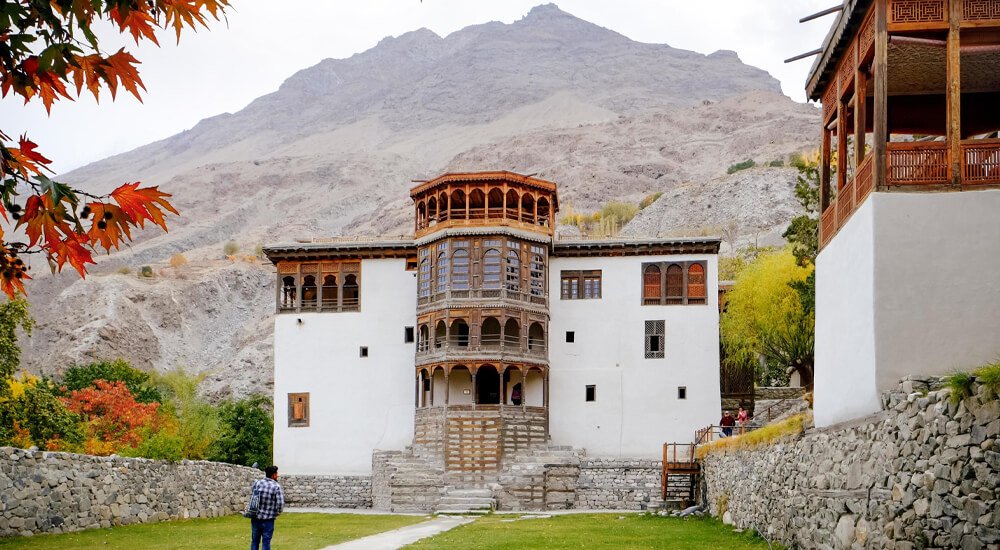Table of Contents
Skardu, often hailed as the “Trekking Capital of the North,” stands as an indispensable destination for anyone exploring the beauty of Pakistan’s north. Despite its initial challenges in tourist infrastructure, recent years have witnessed significant developments, with new hotels, resorts, and restaurants emerging to cater to the growing number of tourists.
Recognizing Skardu’s importance, its airport has been declared international, witnessing numerous daily flights from Pakistani cities (Karachi, Islamabad, Lahore, and Multan) and weekly flights from Dubai.
Click Pak Tourism Services says welcome to all of you for an insightful journey, unveiling the hidden gems of Skardu and its enchanting surroundings. This guide aims to showcase the remarkable treasures nestled in this town. Let’s explore the most captivating activities and the finest places to explore around Skardu.
Best Things to do in Skardu
Nestled in the heart of what seems like the middle of nowhere, Skardu, despite its outpost status, unfolds a tapestry of engaging activities within its immediate vicinity. The main bazaar, a bustling focal point, pulsates with life, offering a dynamic hub of experiences. A wealth of natural beauty awaits, revealing itself in breathtaking landscapes and concealed treasures. Let’s go through them one by one.
- Soak to Katpana Desert:
Possesses the mesmerizing beauty of the Katpana desert nestled near Skardu airport. It stands as a testament to the diverse landscapes that Pakistan has to offer. Often referred to as the “Katpana Desert” or “Katpana Cold Desert,” this unique natural wonder starkly contrasts the common perception of deserts. It is a high-altitude desert, making it one of the highest deserts in the world. What sets it apart is the surreal blend of sandy expanses, snow-capped peaks, and a terrain that transforms into a winter wonderland during colder months. High-quality night accommodation services (Glamping) are also available here to enjoy the mind-blowing experience of the starry sky.

2. Enjoy the view at Marsur Rock:
Embark on the exciting adventure of the Marsur Rock hike, a relatively recent addition that has captured the imagination of Skardu’s locals and visitors alike.
The allure of this hike is prominently featured on countless posters, showcasing the precarious rock perched dramatically above Skardu and the surrounding valley. Regarded as one of the premier day hikes in Skardu, the Marsur Rock ascent offers a thrilling and rewarding experience.
For seasoned hikers, the journey to Marsur Rock is estimated to span half a day, involving an elevation gain of approximately 600 meters. Optimal planning is essential, with an early morning start recommended to mitigate the absence of shade along the trail, where the valley’s temperatures can soar. Proper preparation is key; hikers are advised to carry an ample water supply and snacks and ensure they have sturdy boots for the challenging terrain.
For those seeking an immersive experience, spending the night atop Marsur Rock is a viable option. Many adventurers camp overnight, eschewing the return journey on the same day. To realize this, individuals must come prepared with their tent or consider the convenience of hiring a porter to enhance the overnight experience amidst the rugged beauty of Marsur Rock.
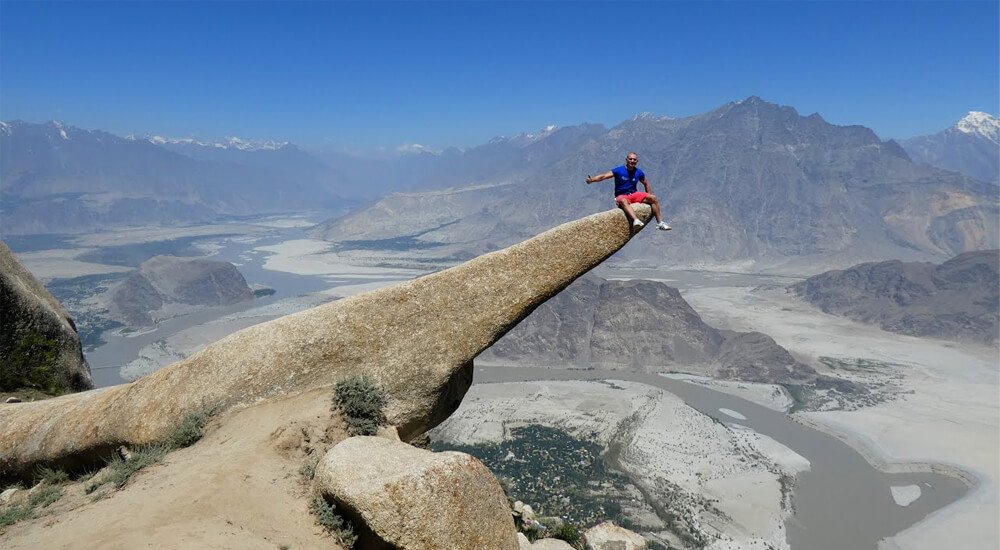
3. Go sandboarding in the Safaranga Desert:
Indulge in the exhilarating activity of sandboarding amidst the stunning landscapes of the Safaranga Desert, one of the two remarkable deserts near Skardu. Nestled near Skardu, the Katpana and Safaranga deserts are among the highest deserts globally.
While the Katpana Desert, situated near the airport, attracts more visitors due to its accessibility, the Safaranga Desert offers a more authentic desert experience. Characterized by higher dunes, captivating scenery, and profound silence, Safaranga is preferred for those seeking an immersive desert adventure. Ensure a reliable off-road vehicle, preferably a sturdy Jeep capable of navigating the sandy terrain, for a seamless journey to the dunes. You can find some adventurous activities in the desert, like paragliding, 4X4 Bike, and Jeep Safari to accelerate your amusement.

4. Relax in the Organic Village:
Organic Village is a hidden gem beyond the colossal rock supporting Kharpocho Fort. This serene wooded area, fondly referred to as The Organic Village by locals, offers a stark contrast to the bustling noise of Skardu. The trail to this oasis commences at the base of the fort climb, leading away from the ascent.
A 20-25 minute soft walk along the cliff’s edge unveils a sandy, wooded enclave along the Indus River. Marked by a prominent sign, the Organic village invites exploration, providing idyllic spots along artificial canals for peaceful moments.

5. Climb up to Kharpocho Fort:
Embark on the ascent to Kharpocho Fort, a quintessential Skardu experience renowned for its central location, prominence, and breathtaking views. The straightforward walk begins adjacent to Bank Alfalah in the bazaar, progressing toward the mountain.
The path weaves through switchbacks, requiring a 20-30 minute soft climb to reach the fort’s vantage point. Revel in unparalleled views of the surrounding mountains and the Indus River Valley from this historic watchtower, originally erected for defense purposes. This is one of the best views in Skardu, so enjoy it.

6. Visit the K2 Museum:
Go into mountaineering history at the K2 Museum, an Italian establishment near the bazaar dedicated to “The Savage Mountain.” Offering free entry, the museum showcases captivating photographs and maps recounting the initial expeditions to K2, first conquered by an Italian team in 1954. Gain insights into the dramatic narrative surrounding the historic ascent while exploring this pyramidal tent-shaped museum on the PTDC Motel grounds.

7. Upper & Lower Kachura Lakes:
Experience serenity at the Upper and Lower Kachura Lakes, a renowned destination in Skardu approximately 45 minutes away by car. Beyond the presence of the Shangri-La Resort, both lakes captivate visitors with their scenic beauty, making them ideal for a day trip.
Activities at the lakes range from fishing and leisurely boat rides to simply basking on the shores. Photographers will find the location irresistibly photogenic, especially in the morning light.
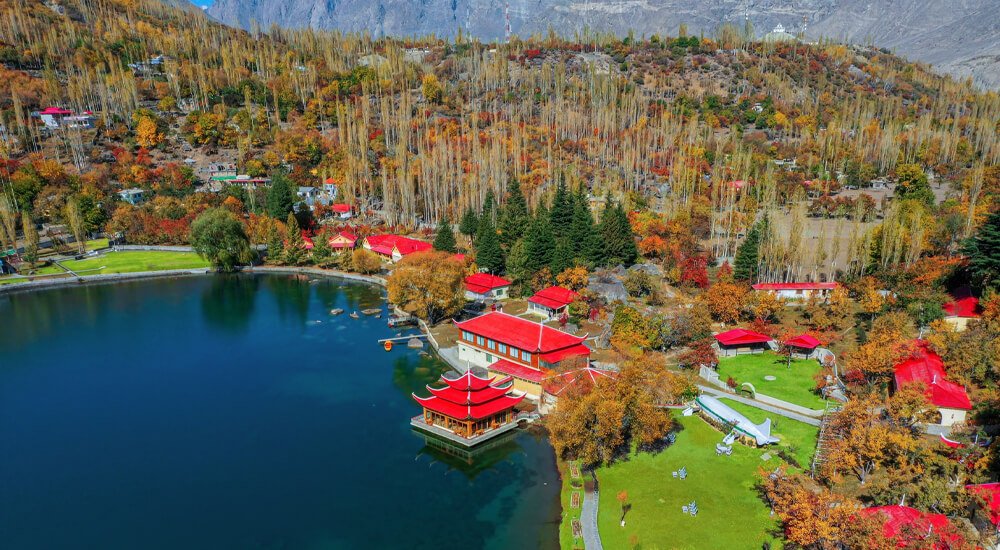
8. Make a day trip to Shigar:
A day trip to Shigar Valley is worth visiting. Shigar is known not only as the gateway to the epic K2 Base Camp trek but also for its picturesque landscapes distinct from Skardu. Commence the journey at the junction leading to the Ghanche district, continuing straight ahead instead of turning towards the Safaranga Desert.
As you enter the valley, marvel at the braided Shigar River, fed by the Baltoro Glacier, enriching the surrounding communities and landscapes. A 30-45 minute drive leads to Shigar Fort, a restored palace now serving as a hotel/museum. Consider spending the night in Shigar Fort for a unique experience, or explore the grounds before returning to Skardu.

9. Shop for jewels in the Skardu bazaar:
Skardu is also famous for its mineral-rich landscapes and abundance of precious stones; Skardu offers a unique opportunity to acquire exquisite gems, making for perfect souvenirs or cherished personal adornments. Gem enthusiasts can explore reputable establishments such as North Handicraft and its adjacent counterpart to begin their quest for local stones. A vital aspect of shopping in Pakistan is the art of bargaining. Be prepared to engage in hearty negotiations, countering initial prices with assertiveness.
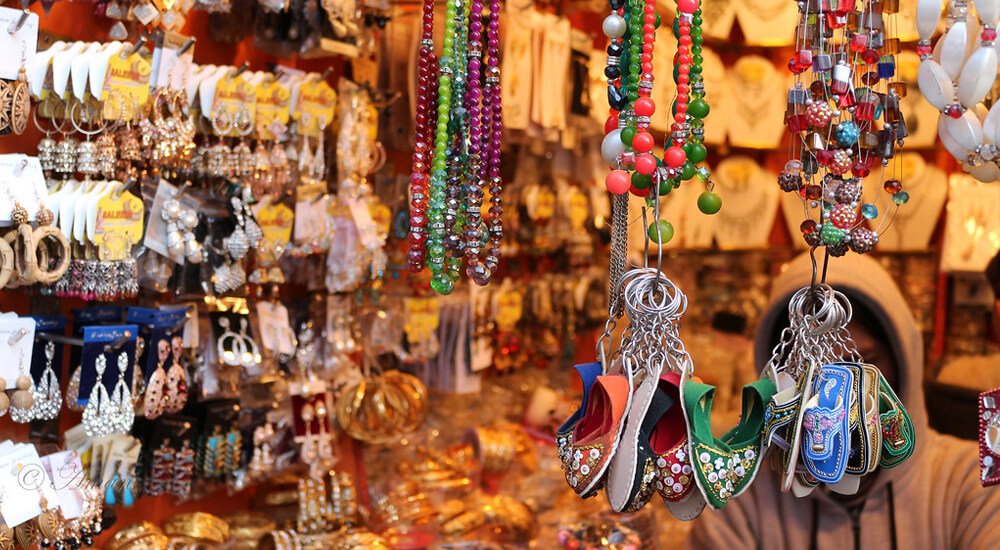
10. Explore the Basho Valley:
Another enchanting place in the Skardu region is known with the name of Basho Valley. The valley provides a serene contrast to the dusty landscapes of the Indus Valley. The road to the valley’s entrance is typically well-maintained, having undergone recent repaving; however, the journey further up the valley may present challenges like mud and potholes. A jeep or 4×4 vehicle is advisable for a smoother travel experience. The inner sanctum of the Basho Valley unveils vast pastures, secluded communities, and numerous waterfalls, creating an atmosphere reminiscent of a hidden paradise.

11. Find the Manthal Buddha Rock:
The Manthal Buddha Rock is a remarkable archaeological relic harking back to the region’s Buddhist roots. Despite the dominance of Islam, traces of Buddhism endure through ancient inscriptions, stupas, and relics. The Manthal Buddha Rock, located on the town’s periphery, is one of Pakistan’s most impressive archaeological remnants.
Carved into a large granite boulder, the depiction of Buddha and his Bodhisattvas imparts a sense of historical resonance. Entrance to the site is accessible for a nominal fee of 150 rupees, allowing visitors to appreciate the awe-inspiring rock art in less than 15 minutes.

Things to Do Outside of Skardu:
Discovering the true essence of adventure extends beyond the confines of Skardu. The allure of epic terrains and distinct traditions awaits those willing to venture slightly off the beaten path. Beyond Shigar, which has already captured our attention, lie three significant districts bordering Skardu: Ghanche, Kharmang, and Astore, each harboring their own treasures.
Get into the history of Khaplu and Chaqchan Mosque:
Khaplu is one of the premier destinations near Skardu, boasting verdant landscapes, tranquillity, and captivating local sites. Serving as the final bastion of civilization before the rugged expanses of Hushe and Khondus Valleys, Khaplu presents an enchanting experience.
The meticulously renovated Khaplu Palace, now a museum and hotel, showcases the distinctive Balti architectural style reminiscent of journeys through Tibet. Adjacent to the palace stands the Chaqchan Mosque, a venerable structure blending Tibetan, Mughal, and Persian influences—a testament to the diverse history embedded in the Balti style.
Khaplu Fort
Orchards of Barah:
Barah, often overlooked but nestled alongside Khaplu, emerges as a hidden gem within the Ghanche district. A verdant oasis amid the desolate Baltistan, Barah thrives on abundant glacier-fed water, fostering lush landscapes and flourishing gardens. The region is renowned for its apricot orchards, boasting over 40 varieties and claiming to produce the nation’s best apricots.
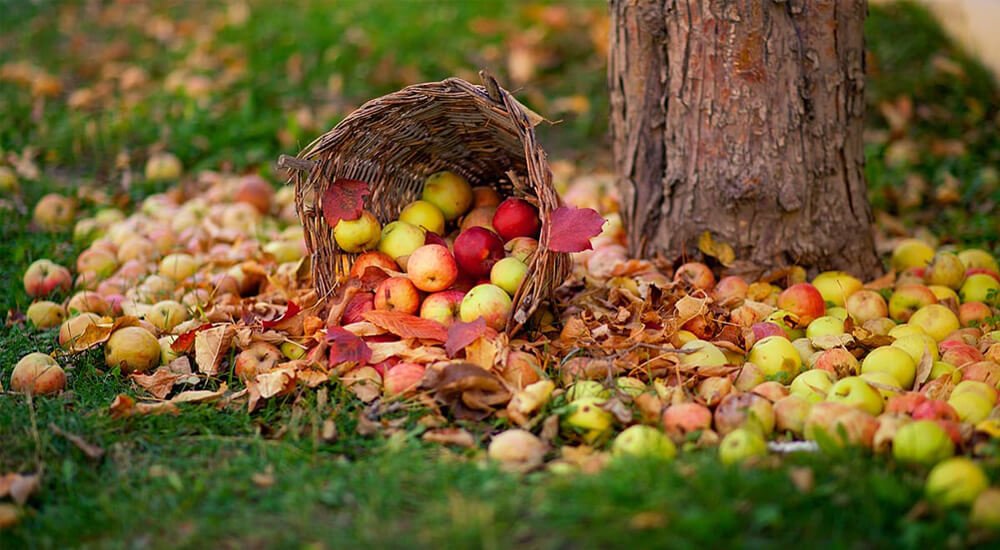
Conquer Moses Peak:
Atop the Barah Valley, Moses Peak unfolds a 360-degree panorama, encompassing the Karakoram, Himalaya, and the Hindu Kush ranges. Despite K2’s formidable presence, spotting this colossal mountain requires effort. While the traditional route involves a lengthy trek up the Baltoro Glacier, alternative viewpoints like Machlu La, Burji La, and Humbrok offer glimpses of K2. However, none compare to the awe-inspiring Moses Peak, standing at an impressive 5300 meters.

Hushey Valley:
Allow me to express my initial astonishment at Hushey – a destination that surprised me. Nestled within the embrace of the Hushey Valley is the formidable Mashabrum Peak I, a summit renowned for its tough challenges. Hushey often remains overlooked when travelers plan their activities in Skardu.
Upon our arrival in the valley, we encountered a warmly welcoming homestay-turned-hotel strategically located near the Central Karakoram National Park entrance. The landscape was adorned with a pristine blanket of snow, and as we ventured toward CKNP, the snow became more abundant, unveiling breathtaking vistas.

Indulge in Fresh Fish at Saling:
Savouring fresh fish is a delightful experience in the Skardu region, where fish farming is a common practice. Every town boasts its own fish farms, and those around Saling are particularly renowned. The journey to Saling is rewarded with river trout, renowned for its rich flavor, especially when expertly grilled and seasoned with Pakistani masala.

Visit to Deosai National Park:
Deosai Natural Park unfolds as an expansive alpine plateau, second only to the Tibetan Plateau in terms of square mileage. Deosai offers vast grasslands beneath an endless sky, circumscribed by a ring of mountains. This serene expanse provides breathtaking views of Nanga Parbat. 4X4 transport and equipment are essential, and thorough preparation is advised for a journey to Deosai.

Sheosar Lake & Rama Lake:
Situated within the confines of Deosai National Park, Sheosar Lake beckons visitors with its breathtaking allure, making it an essential stop for anyone exploring Deosai. Astore boasts another gem in Rama Lake, a must-visit destination. However, reaching it from Deosai is more challenging than the easily accessible Sheosar Lake. Perched at one of the highest elevations in the Astore district, Rama Lake demands a rewarding two-hour hike from the drop-off point in Astore Valley.

Majestic Views of Haldi Cones:
While Hunza’s Passu Cones often steal the spotlight on social media, Ghanche boasts its own captivating cones—the Haldi Cones. Situated across the Hushe River from Khaplu, these cones present a striking spectacle, resembling their famous counterparts near Passu in crookedness and an enigmatic allure. The Saling Bridge, marking the transition from Khaplu to Hushe, offers an ideal vantage point for an almost perfect view of the Haldi Cones.

Experience Treks in the Hushe Valley:
Proximity to the Central Karakoram National Park makes the Hushe Valley a treasure trove of outstanding treks in Baltistan. Spanning from the Saling Bridge to the village of Hushe, this valley presents various trails catering to diverse preferences. Noteworthy treks include:
- Humbrok (2 days/1 night): A quick overnight trek offering a decent viewpoint with a glimpse of K2.
- Machlu La (3 days/2 nights): Leading to an alpine meadow with spectacular views of K2, starting from the village of Machlu, a 30-45 minute drive from Saling Bridge.
- Thale La (4 days/3 nights): A traverse connecting the Hushe Valley with Shigar, providing up-close views of the Karakoram mountains (excluding K2).
- Nangma Valley (4 days/3 nights): A granite playground with climbing opportunities, often compared to Yosemite, featuring the iconic Aminn Braak peak and the backside of K6.
- Masherbrum Base Camp (4 days/3 nights): A challenging approach to the base of the 7,800-meter Masherbrum, starting in the village of Hushe and involving serious glacier trekking (guide recommended).
- Charakusa Valley (6 days/5 nights): Revered among the climbing community, this valley offers diverse climbing opportunities, including several virgin peaks. Check the trail status in advance, as the valley is prone to rockslides. The journey commences from Hushe.
Cool Off at Manthokha Waterfall:
Manthokha Waterfall, a well-developed tourist attraction near Skardu, beckons with its majestic 180-foot cascade over a cliff. The quintessential Balti landscape surrounding the falls, with rugged mountains and poplar trees, creates a picturesque setting. While a day trip from Skardu (3+ hours) is feasible, staying overnight is recommended for a more immersive experience.
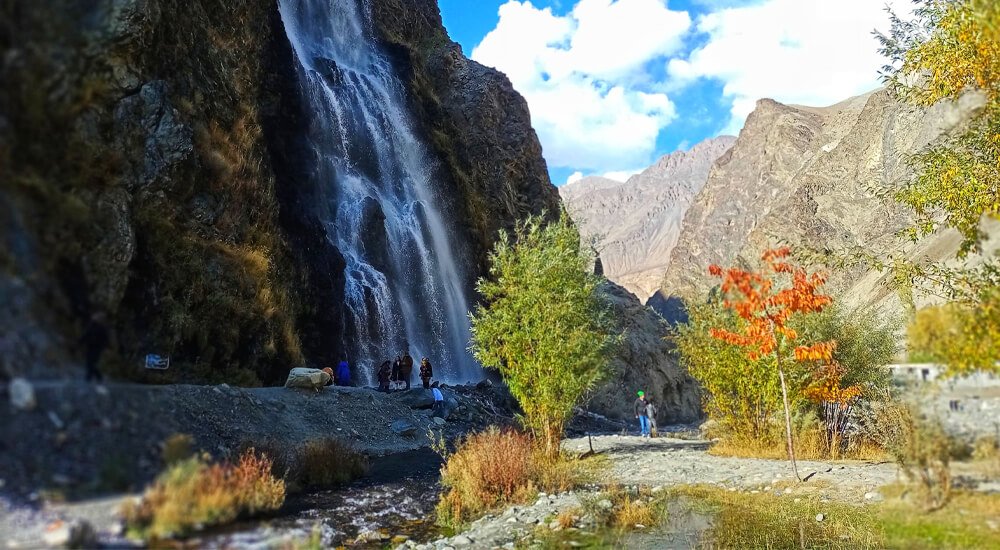
Read More: Skardu Tour Packages 2024
Where to Stay in Skardu:
While some prefer accommodations in the bustling center of Skardu near the bazaar, others seek tranquillity a short distance away. Beyond the dust and chaos, a mere 10-15 minutes from the bazaar, lies a quieter retreat.
Here are a few recommendations:
- Summit Hotel Skardu
- Himaliya Hotel Skardu
- The Maple Resort Skardu
- Hotel One Skardu
- The Legend Hotel Skardu
- Mountain Lagoon (Kachura Valley)
- Shangrila Resort (Kachura Valley)
- Tibet Resort (Kachura Valley)
- Serena Shigar Fort (Shigar Valley)
- Khoj Resort (Shigar Valley)
- Serena Khaplu Fort (Khaplu Valley)
- Glamp Pakistan (Deosai Plains)
How to Get to Skardu:
Skardu is accessible by air or road. While flying is the most convenient option, with several daily flights from various Pakistani cities, it is subject to weather-related cancellations. Flights operate from Islamabad (45 minutes), Lahore (1 hour), Multan (90 minutes), and Karachi (2 hours), with an average ticket price of 160-200 USD round trip. In case of flight cancellations, route changes or date adjustments may be possible but not guaranteed.
For those preferring a road journey, two routes are available:
Route via Gilgit-Skardu Road:
This is the main route that is currently completed. It takes around 12 hours to reach Skardu from Islamabad and 4 to 5 hours from Gilgit. It sometimes gets closed due to land sliding, which can cause you to add more 3-4 hours into your journey to Skardu.
Route via Deosai and Astore:
Suitable for 4×4 vehicles, this route requires traversing challenging terrain between Chalham and Sadpara. While public transport is an option, private arrangements, such as tours or rental cars, are advisable. The journey from Astore to Skardu takes about 6-8 hours, crossing the epic Deosai plains—a worthwhile detour.


